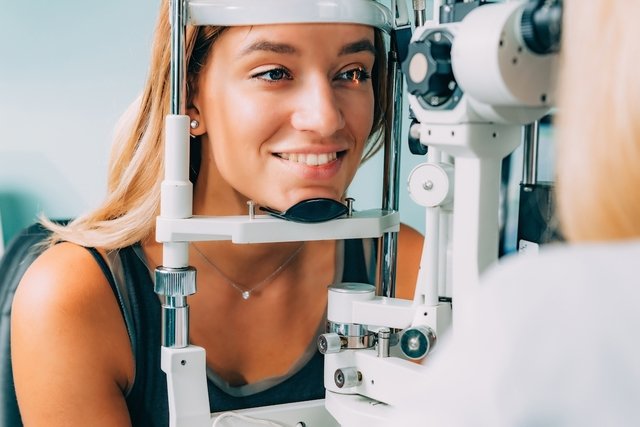Surgery for strabismus can be performed on children or adults, but it is not normally the first solution to correct the problem, as there are other treatments, such as the use of corrective glasses, eye exercises or eye patching, which can help to obtain the same results, without the need for surgery.
However, in cases of constant strabismus in childhood, surgery is always recommended to prevent the child from developing a depth vision problem, also known as stereo blindness, where the person cannot see depth.
It is always important to consult an ophthalmologist to assess the type of strabismus and what consequences it may cause, opting for the best form of treatment.

How is the surgery done
Surgery for strabismus is typically done in the operating room under general anesthesia to allow the doctor to be able to make small cuts in the eye muscles to balance the forces and align the eye.
Generally, the surgery does not leave any type of scar, as it is not necessary to make cuts in the skin or remove the eye. Additionally, if the doctor uses an adjustable suture, it may be necessary to repeat the surgery after a few days to completely align the eye.
Recovery after surgery
The post-operative period after strabismus surgery is quick and, normally, the redness and discomfort, which are common after surgery, disappear within 3 days to 1 week.
After surgery, the most important care includes:
- Avoid driving the day after surgery;
- Return to work or school just 2 days after surgery;
- Use prescribed eye drops;
- Take medications prescribed by your doctor, which may include painkillers or antibiotics.
It is also important to avoid swimming for two weeks, to prevent bacteria-contaminated water from entering the eye and damaging recovery.
Possible risks of surgery
Surgery to correct strabismus is quite safe, however, like any other surgery it can have some risks such as double vision, eye infection, bleeding or decreased ability to see. These risks can be practically eliminated if all the doctor’s instructions, after surgery, are followed.

Sign up for our newsletter and stay up to date with exclusive news
that can transform your routine!
Warning: Undefined array key "title" in /home/storelat/public_html/wp-content/plugins/link-whisper-premium/templates/frontend/related-posts.php on line 12
Warning: Undefined array key "title_tag" in /home/storelat/public_html/wp-content/plugins/link-whisper-premium/templates/frontend/related-posts.php on line 13




